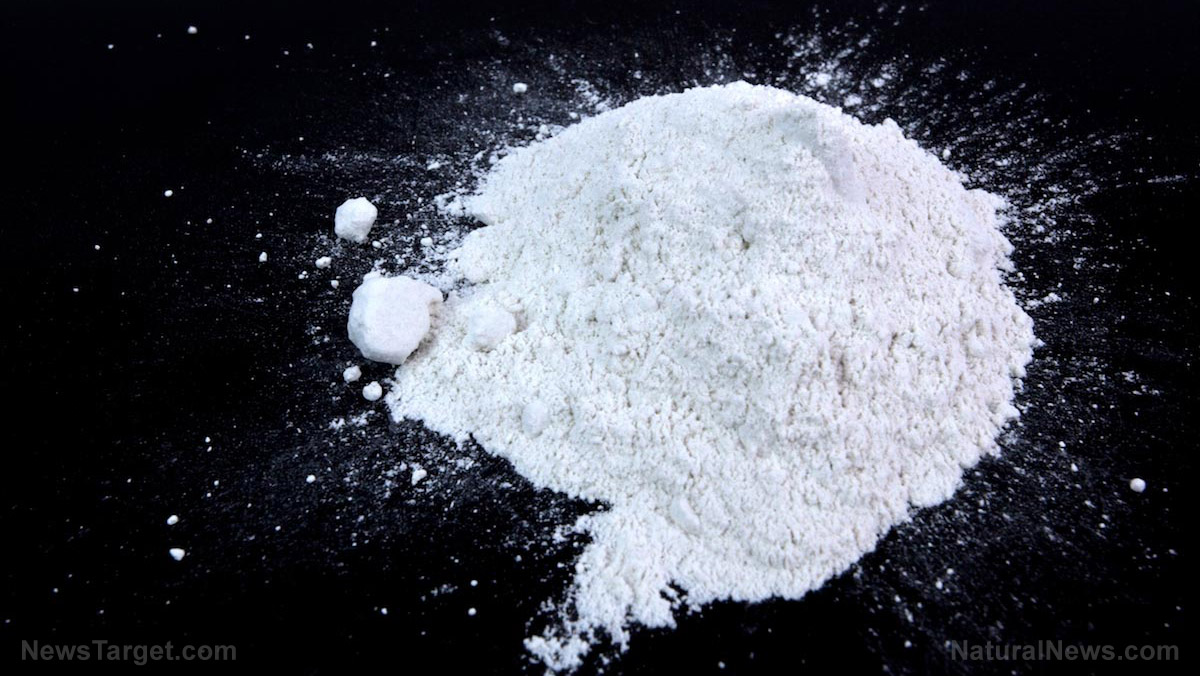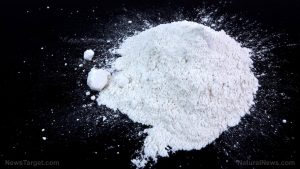Thifensulfuron-methyl – toxicity, side effects, diseases and environmental impacts
11/08/2017 / By Frances Bloomfield

Thifensulfuron-methyl is a synthetic substance that appears as a fine, white powder. First approved for use in 1988, thifensulfuron-methyl is a selective, systemic herbicide most often utilized in the post-emergence control of the weeds commonly present in spring- and autmun-sown cereals.
While not considered a toxic chemical, thifensulfuron-methyl can cause some side effects with exposure and use.

List of known side effects
Thifensulfuron-methyl should never be ingested. According to PesticideInfo.org, swallowing thifensulfuron-methyl can cause vomiting, nausea, confusion, headache, and electrolyte depletion.
In addition, thifensulfuron-methyl can irritate the the skin, eyes, and mucus membranes. The skin is particularly vulnerable to the aggravating effects of this substance, as direct contact can result in irritation with discomfort, redness, swelling, and/or itching.
Those who inhale thifensulfuron-methyl are at risk of experiencing shortness of breath and coughing.
Chronic exposure to thifensulfuron-methyl can yield more severe effects, which include protein metabolism disturbances, weight loss, and moderate emphysema, a long-term and progressive lung disease wherein the over-inflation of lung air sacs results in shortness of breath.
When disposing of thifensulfuron-methyl, ensure that it has no chance of seeping into any bodies of water. This substance is said to be highly toxic to aquatic life, and has been known to leave behind long-lasting effects on the mortality of fish and biochemistry of marine plants.
Body systems affected by thifensulfuron-methyl
Thifensulfuron-methyl can be harmful to the skin, eyes, respiratory, and digestive systems.
Some government agencies have proposed that thifensulfuron-methyl should be classified as a possible reproductive toxin and endocrine disruptor, though continues to be the subject of debate.
Through systemic toxicity, thifensulfuron-methyl may negatively impact other body systems and parts as well. However, systemic toxicity, or when a toxin’s effects affect multiple sites throughout the body, will only happen when large amounts of this substance have been ingested.
Items that can contain thifensulfuron-methyl
A number of branded herbicides include this substance as one of their active ingredients, most notably:
- Harmony M
- Lancer
- Pennant
- Pinnacle
Additionally, some companies either used to or continue to manufacture, supply, and add thifensulfuron-methyl to the products. These are:
- Cheminova
- DuPont
- Headland
How to avoid thifensulfuron-methyl
If using a thifensulfuron-methyl-containing herbicides indoors, make it a point to keep the area as well ventilated as possible. After use, open all windows, turn on all fans, and stay away from the treated area for the length of time instructed on the product’s label.
Those who are exposed to thifensulfuron-methyl during manufacturing should never forget to wear the necessary protective clothing and equipment.
To further minimize exposure, be sure to store thifensulfuron-methyl-containing products in their original canisters, away from places where they can leak into drains or wells. These types of products shouldn’t be kept near food, feed, medical supplies, fertilizers, and other herbicides.
Where to learn more
Summary
Thifensulfuron-methyl is a synthetic substance that has the potential to cause irritation to the skin, eyes, and mucus membranes.
When inhaled, thifensulfuron-methyl can cause respiratory problems.
The ingestion of thifensulfuron-methyl can bring about nausea, vomiting, and other various digestive problems. Ingesting large amounts of this may result in systemic toxicity.
Sources include:
FAO.org
Sitem.Herts.AC.uk
PesticideInfo.org
OnlineLibrary.Wiley.com
PubChem.NCBI.NLM.NIH.gov
Tagged Under: Thifensulfuron-methyl



















